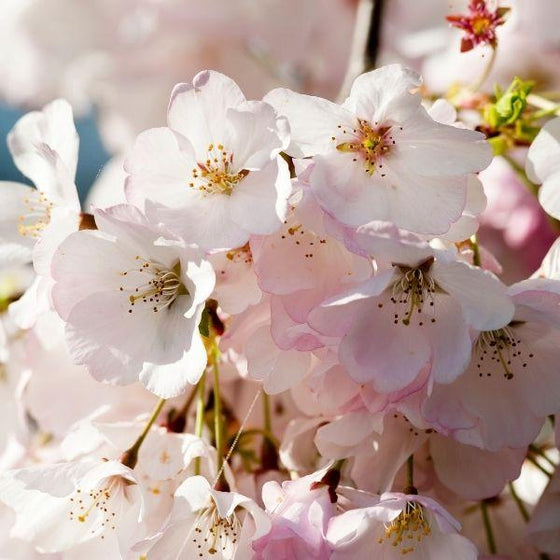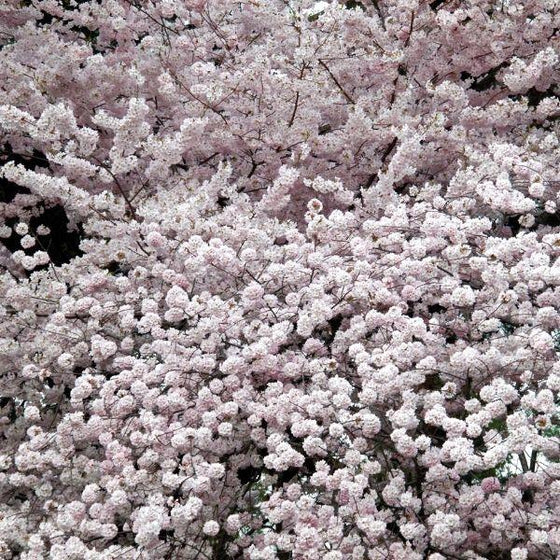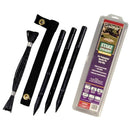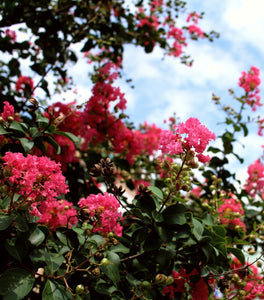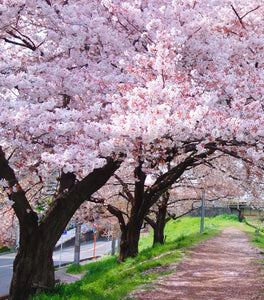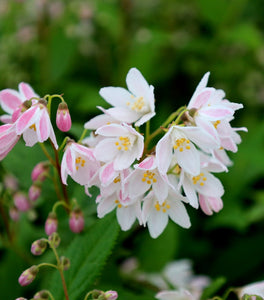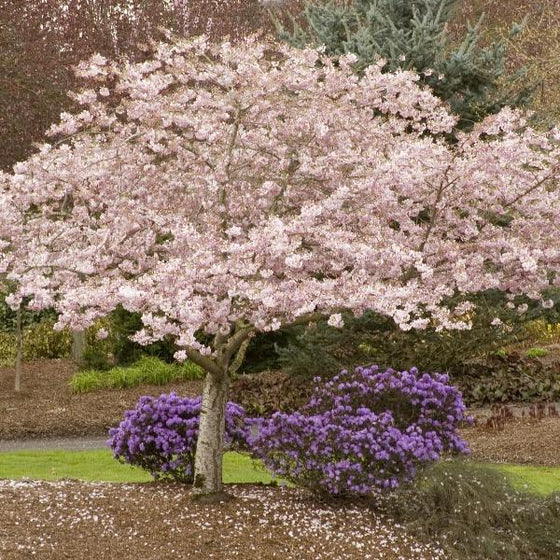
Images Depict Mature Plants
Akebono Cherry Trees for Sale Online
Akebono Flowering Cherry Trees (Prunus x yedoensis 'Akebono') are deciduous trees that create a stunning display of fragrant flowers in spring. The fluffy pink flowers transition to white toward the end of bloom season and the glossy green leaves give this exquisite shade tree summer interest. The foliage then transitions to golden yellow in the fall before shedding in the winter, revealing bark stippled with attractive lenticels.
Its large delicate flowers bloom in the early spring before the green foliage emerges, covering the entire surface area with the prolific ruffled flowers. As a young tree, it tends to grow in an upright form before gradually transforming into the asymmetrical rounded shape that makes Akebono an ideal shade tree for a spring picnic.
Akebono Cherry Trees are low maintenance and drought tolerant once established. Full sun is ideal and like most plants, well-drained soil is highly important to survival, especially as a young sapling. Plant this cherry tree along a sidewalk or path and enjoy years and years of blossoms, attracting pollinators, hummingbirds, and butterflies.
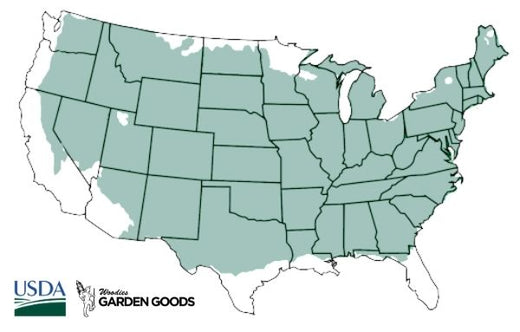
| Hardiness Zone: | 4-8 |
|---|---|
| Mature Height: | 20 to 25 Feet |
| Mature Width: | 20 to 25 Feet |
| Classification: | Broad leaved deciduous tree, spring flowering |
| Sunlight: | Full sun |
| Habit: | Upright, rounded shape |
| Foliage: | Dark green, brilliant bronze-orange fall color |
| Flower Color: | Light pink, very floriferous |
| Pruning Season: | No pruning needed |
| Soil Condition: | Any well drained soil |
| Water Requirements: | Water well until established |
| Uses: | Tolerates moist soil and full sun. Full sun brings out the best fall color. Will adapt to drier sites. |
How to Care for Akebono Cherry Tree
Be sure to read our planting instructions to ensure a healthy and happy plant for years to come!
How to plant Akebono Cherry Trees?
We suggest when planting your newly purchased Akebono Cherry Trees that you dig a hole twice as wide as the root system but not deeper. Depending on the quality of your existing soil you may need to add a locally sourced compost or topsoil to the back-fill soil. We do not recommend using straight topsoil or compost as a back-fill soil because more times than not these products will retain entirely to much moisture and will cause the root system to rot. Adding compost or topsoil will help the young feeder roots of Kwanzan Cherry Trees to spread through the loose, nutrient rich soil, much easier than if you used solely the existing soil which more times than not will be hard and compacted. The most common cause of plant death after transplanting is planting the new plant to deep. That is why we do not recommend planting in a hole any deeper than the soil line of the plant in the pot. A good rule is that you should still be able to see the soil the plant was grown in after back-filling the hole.
How do I water Akebono Flowering Cherry Trees?
After back filling and lightly compacting the 50/50 mix of existing soil and compost give the Akebono Cherry Trees a good deep watering. This is not to be rushed. Most of the water you put on the plant at first will run away from the plant until the soil is soaked. A general rule of thumb is to count to 5 for every one gallon of pot size. For example a one gallon pot would be watered until you count to 5 a three gallon pot would be 15 and so on. Check the plant daily for the first week or so and then every other day there after. Water using the counting method for the first few weeks. Gator Bags can be used to help aid in this process and also provide plants with a good soaking due to the slow release of the water into the root-zone of the plant. Soaker Hoses can also be used to water when planting a long row of trees.
How do I fertilize Flowering Akebono Cherry Trees?
Trees such as Akebono Cherry Trees grow best if they are fertilized lightly in the spring once frost has passed with a well-balanced, extended-release, fertilizer such as Espoma Tree-tone. Fertilize them again 6 to 8 weeks later to encourage denser foliage or faster growth of young trees. We recommend Bio-Tone fertilizer when planting. Either chemical fertilizers or organic matter can be used successfully. Since an organic method of applying manure and/or compost around the roots, produces excellent results and also improves the condition of the soil, this would be an excellent first line of attack. Organic additions to the soil can also be combined with a shot of chemical fertilizer for maximum effect. Don't fertilize Akebono Cherry Trees after August. Fall is the time for plants to begin preparing for dormancy. Fertilizing at this time may stimulate new growth that will be too tender to withstand the winter.
How do I mulch Akebono Cherry Trees?
We highly recommend that you mulch your Akebono Cherry Trees with either a ground hardwood mulch or a ground cypress mulch depending on your local availability. Any type of mulch will do but cypress or hardwood mulch will be of a higher quality and provide better nutrition overall as they breakdown. Mulching helps to keep weeds away which will compete with your new investment for water and nutrients. A 2 to 3 inch layer of mulch is sufficient but remember to take care not to cover any part of the stem of the plant with mulch. Its better to leave a one inch gap of space between the mulch and the stem or trunk of the plant.


